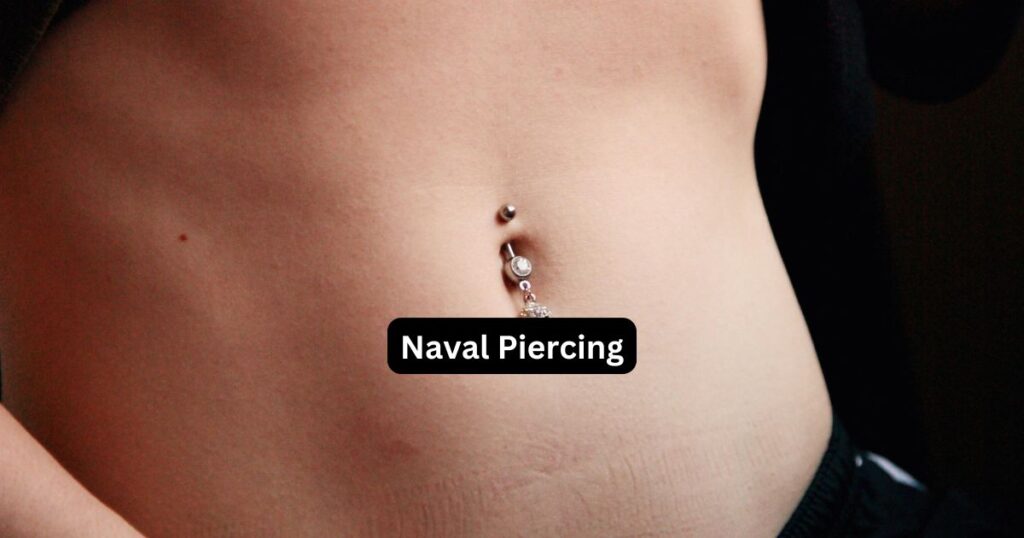The most painful piercings include nipple piercings, septum piercings, and genital piercings. These piercings target areas with dense nerve endings, making them especially uncomfortable.
Pain varies based on factors like location, thickness of the tissue, and individual tolerance. Here’s a breakdown of the most painful piercings, why they hurt, and what to expect during the process.
Why Do Some Piercings Hurt More Than Others?
The pain of a piercing depends on a few things. Areas with more nerve endings tend to hurt more. Piercings in thick or fleshy areas can also be more painful because the needle has to go through more tissue.
Another factor is how close the piercing is to bone or cartilage. Piercings in areas like the nose or ear cartilage can cause sharp pain because they’re near harder structures.
What Piercing Hurts The Most?
The most painful body piercings are:
- Nipple Piercings – Nipple piercings are often considered one of the most painful body piercings. The nipple has many nerve endings, making it very sensitive. The pain during the piercing can be sharp and intense. For some, the pain lingers as the piercing heals, which can take several months.
- Septum Piercings – A septum piercing goes through the thin wall between your nostrils. It’s not always as bad as people think because the septum has a “sweet spot” where there are fewer nerves. However, if the piercer misses this spot, the pain can be quite severe. The healing process is usually straightforward, but the initial piercing can be rough.
- Genital Piercings – Genital piercings are known to be some of the most painful body piercings. The amount of pain depends on the exact area being pierced. For example, a clitoral hood or Prince Albert piercing involves areas with many nerve endings, leading to intense pain. Healing can also be tricky due to the location.
Moderately Painful Body Piercings
These piercings might not be as painful as the top three, but they still hurt more than standard piercings like the earlobe:
- Industrial Piercings – An industrial piercing involves two piercings connected by a single piece of jewelry. It’s usually done on the upper ear. Since it goes through cartilage, the pain can be sharp and intense. The healing process can also be uncomfortable because you have two piercings healing at the same time.
- Daith Piercings – The daith is the small fold of cartilage just above your ear canal. Since it’s a cartilage piercing, it can be quite painful. Some people report a sharp pinch during the piercing, followed by a throbbing sensation. Healing times can vary, but it generally takes longer than a standard ear piercing.
- Helix Piercings – Helix piercings go through the outer cartilage of the ear. These piercings tend to hurt because of the thickness of the cartilage. The pain can be sharp, but it’s usually over quickly. However, the healing process can be uncomfortable, especially if the ear gets bumped or pressed.
Less Painful Body Piercings
Some piercings are known for being relatively painless. Here are a few that are easier to handle:
- Earlobe Piercings – Earlobe piercings are usually considered the least painful. The earlobe is soft and fleshy, with fewer nerve endings. Most people describe the pain as a quick pinch that doesn’t last long. Healing is also quick and uncomplicated.
- Nostril Piercings – A nostril piercing goes through the flesh of your nose, which has fewer nerve endings than areas like the septum. The pain is usually described as a sharp pinch, followed by a stinging sensation. Healing is generally quick, but the nose can be sensitive for a few weeks.
- Eyebrow Piercings – Eyebrow piercings go through a relatively thin layer of skin. The pain is usually mild and doesn’t last long. Some people report a slight throbbing afterward, but this usually goes away within a day or two. Healing is fairly simple as long as the piercing is kept clean.
Tips for Managing Pain When Piercing
While some piercings hurt more than others, there are ways to make the experience more comfortable. Here are some tips:
- Choose an experienced piercer: A skilled piercer can make the process faster and less painful.
- Stay calm: Tension can make the pain feel worse. Try to stay relaxed and breathe deeply.
- Eat before your appointment: Going in with low blood sugar can make the pain feel more intense. A small snack can help.
- Follow aftercare instructions: Proper aftercare helps the healing process and reduces discomfort.
- Consider numbing creams: Some people use numbing creams to reduce the initial pain. Talk to your piercer about this option.
A Summary
If you’re worried about pain, it’s important to do your research. Nipple, septum, and genital piercings tend to hurt the most, while earlobe and nostril piercings are usually less painful.
The pain also depends on your personal tolerance and how skilled your piercer is. Regardless of which body piercing you choose, proper preparation and aftercare can make the experience much more manageable.



